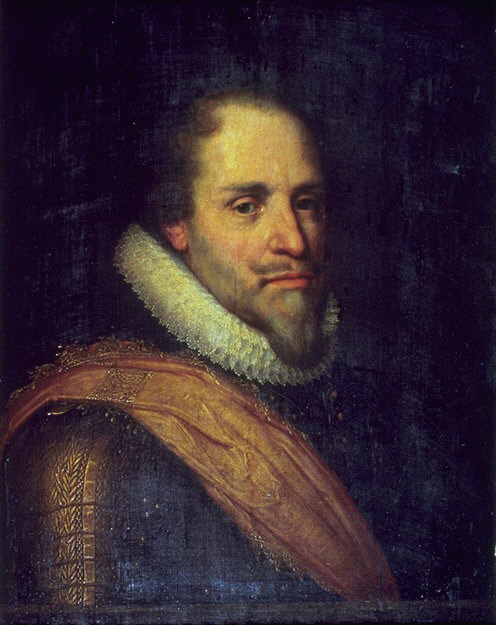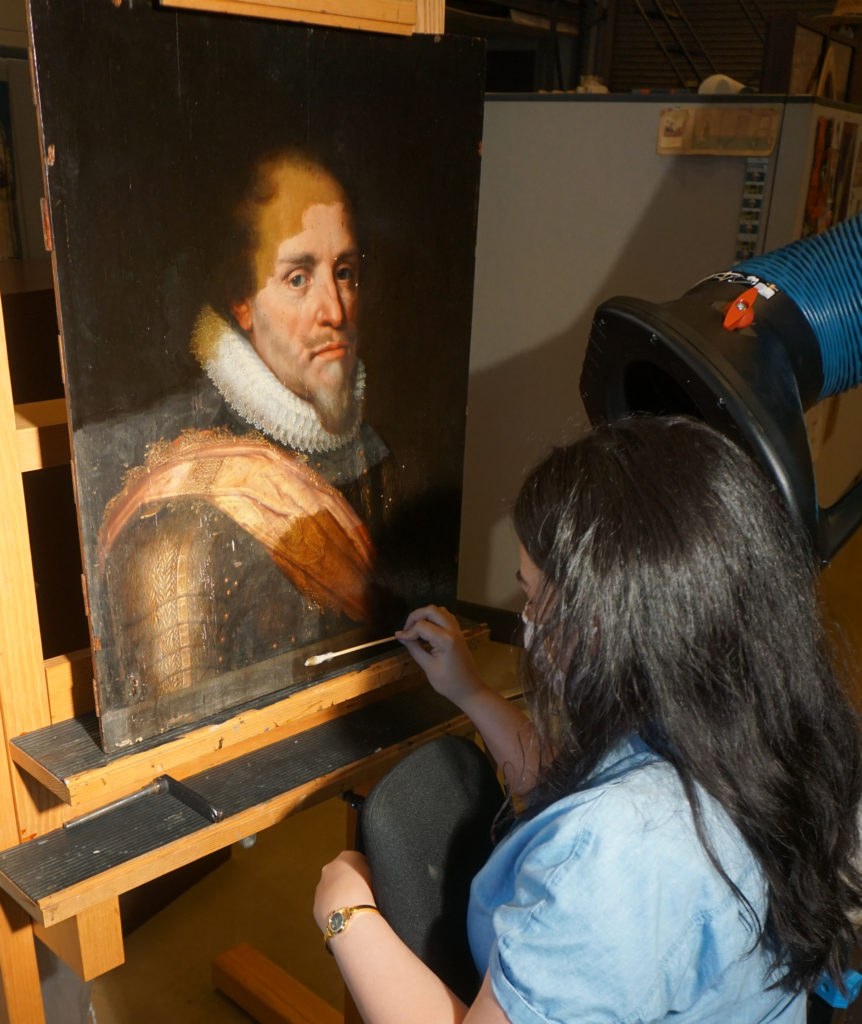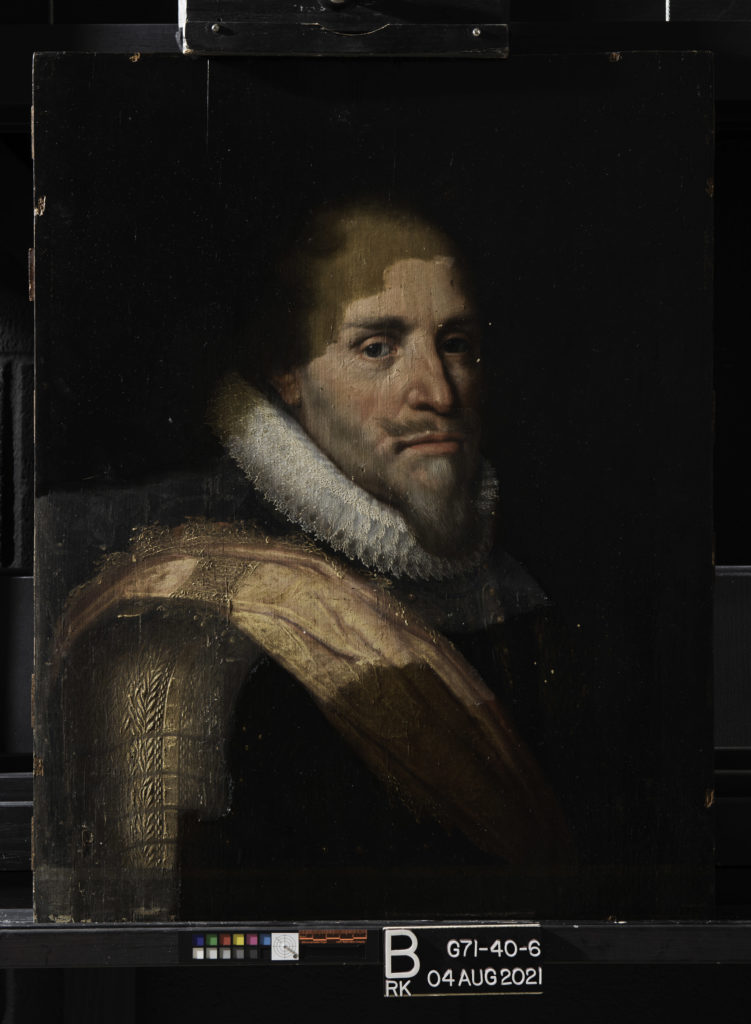Portrait of Maurits, Stadholder and Prince of Orange (1567–1625) (work of art)
Artwork Info
Key Ideas
- This is a painted portrait of Maurits, the Prince of Orange. He was in his teens when he became the stadholder (national leader) of the Dutch Republic.
- Michiel van Mierevelt was a Dutch portrait painter. He painted this portrait during the Eighty Years’ War.
- This painting underwent conservation efforts at the NCMA. The paint colors were more vibrant after the old varnish was removed.
Learn More
This 17th-century Dutch painting depicts Maurits (Maurice in English), the Prince of Orange. He was 16 years old when his father, William I, was murdered. Maurits was appointed to his father’s office of stadholder of the Dutch Republic. He served in that role for four decades. Maurits’s father led the Dutch War of Independence (also called the Eighty Years’ War or Dutch Revolt) against Spain. The war between Spain and the Netherlands lasted from 1568 until 1648. When the war ended, the Netherlands gained its independence from Spain.
Maurits was a key military and cultural figure in the Netherlands. Dutch colonization and trade brought wealth to the region during the so-called “Dutch Golden Age.” Maurits profited from (and sometimes led) the activities of the Dutch East and West India companies. They were the two colonial corporations that were responsible for Dutch expansion, exploitation, and violence.
Michiel van Mierevelt was a Dutch portrait painter who achieved financial success with his art. At the height of his career, he owned multiple homes and several plots of land. He created this painting of Maurits during the Eighty Years’ War.
This work of art was carefully restored by the NCMA Conservation team. Conservation experts removed the old varnish from the surface of the painting and discovered more vibrant colors beneath it.
Additional Resources
Resources for Teachers
- Read the artist’s biography.
- Read an article that explores the term “Dutch Golden Age.”
- Read a short article about the Prince of Orange.
Resources for Students
- View a similar painting by Mierevelt.
- Explore a web page that explains image transfer techniques used in art.
- Watch a video about the Eighty Years’ War.
- Watch a video about the restoration of a painting.



